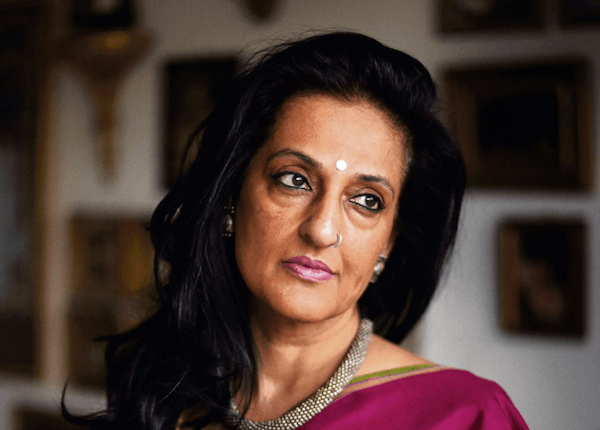Seema is a London based mythologist, storyteller, and doctor of Narrative Practices specialising in women's narratives. Her work on the revival and reproduction of oral literature from India is associated to the UNESCO project for Endangered Oral Traditions. She is an authority on the Mahabharata and the Ramayana and lectures on Tantra, the Mahavidyas, the Kama Sutra and the Bhagavad Gita.
Seema conducts Soft Skills training within the corporate sector using storytelling and the Power of Narrative.
Early Tragedy
Seema was I was 19 when her father was assassinated. She recalls “The soul destroying pain. I stopped praying, I stopped believing in God. It was like being abandoned. One of my professors was the head of department and had been through tough times – she told me that you have to look at life as a series of tiny tiny stories - you just have to change one little ending at a time. I began my career as a story therapist. Stories are magic.”
Early challenges
Seema says that while growing up in India, the main problem was being taken seriously and getting access to funding, research, training etc. “The Indian community does not understand the concept of 'Story telling'. 'Woh kya hota hai' - what on earth is that? 'Do fashion design or get married,'” She would be told. But Seema comes from four generations of highly educated working women. “Even my great grandmother was a social activist and an inspector of schools during the Raj. So no amount of put downs were going to stop me. But not much has changed with the Asian male - to this day when I introduce myself as story teller the response is 'oh ha ha I am also a story teller'! When they meet a brain surgeon do they also say - 'oh ha ha I am also a brain surgeon?’ she asks.
Family doesn’t stop her
Seema was 23 when she came to live in London. Like most young Asian mothers, she wanted to wait until her kids grew up before following her own dreams. “But when my third one came along I realised that if I waited for her to grow up I would on my Zimmer frame by then. And so three months after her birth I enrolled for my Ph.D. I was so proud of being a graduate mom, of being a role model for my kids. But it was the hardest four years that I can think of – juggling three kids under 10, carrying a new born to Oxford on the bus every week, breast feeding outside the library. But I think the excitement of being able to do it sustains one.
What is Storytelling?
Seema doesn't understand why Asians don't get storytelling. “After all, we have a centuries old tradition of 'sutradhara'. Dance, music or theatre - yes. Storytelling is a hermaphrodite art form. They still tend to see stories as a children's activity. To date most of my audiences are non-Asian. Also my work is based on women's narratives so many of the stories are controversial. Perhaps that also makes people uncomfortable - having to look too closely at one’s own beliefs and see them for what they are!”
But she finds that once people have been for a story telling they are converts. “I cannot think of anyone who has gone back after a performance disappointed.
I think if one is to be a pioneer at anything it is important to be good. If people enjoy what they see they will automatically come back for more.
Seema has set two goals for herself. “I believe that we are the stories that we tell. These are the stories that create our identities and define our roles within our communities and if we want to create change, then it is these stories that we need to change. I would like to change the women's stories that we tell. We tell far too many stories about victimhood. I want to get rid of the victim stories and retell them as stories of strength and empowerment. And I would like to help bring storytelling to the mainstream stage so that it is something that women in rural and urban areas can use as a commercial skill. Stories have so many aspects and so many functions - I want to see them respected and provide a means of subsistence for the tellers.
........................................................................................................................................................................
“Stories have so many aspects and so many functions - I want to see them respected and provide a means of subsistence for the tellers.”



